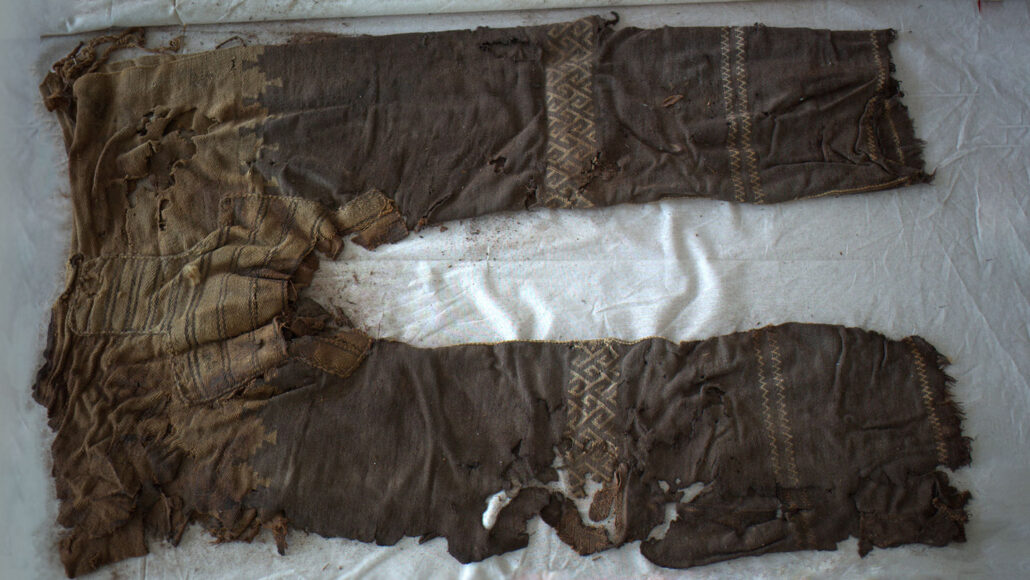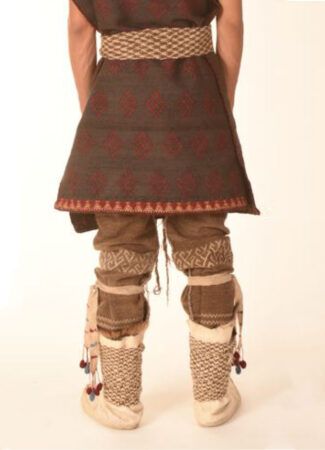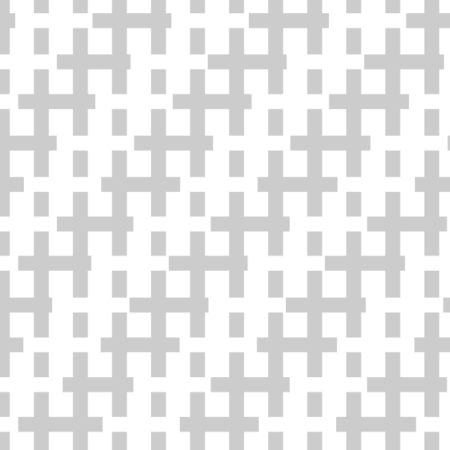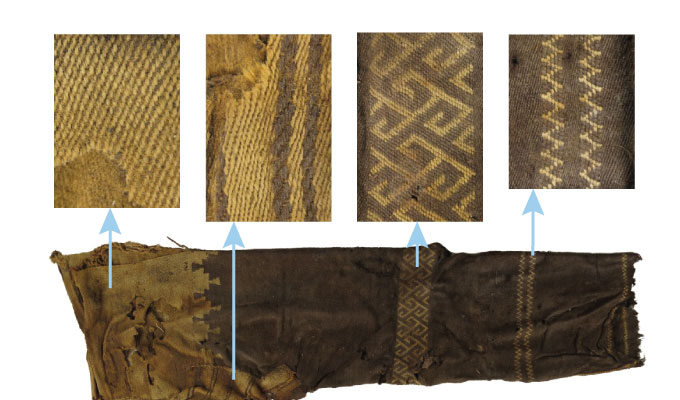The earliest known pants are surprisingly modern — and comfy
Not only stylish and functional, this 3,000-year-old garment also was multicultural

These are the oldest pants ever found. Their 3,000-year-old weave and patterns appear to reflect influences from cultures across Asia, researchers say.
M. Wagner et al/Archaeological Research in Asia 2022
By Bruce Bower
Little rain falls on a gravelly desert in western China’s Tarim Basin. In this dry wasteland lie the ancient remains of herders and horse riders. Although long forgotten, these people made one of the biggest fashion splashes of all time. They pioneered pants.
This was long before Levi Strauss started making dungarees — some 3,000 years earlier. The ancient Asian garment-makers combined weaving techniques and decorative patterns. The end result was a stylish yet durable pair of trousers.
And when discovered in 2014, these were recognized as the world’s oldest known pants. Now, an international team has untangled how those first pants were made. It wasn’t easy. To do recreate them, the group needed archaeologists and fashion designers. They recruited geoscientists, chemists and conservators, too.
The research team shares its findings in the March Archaeological Research in Asia. Those vintage slacks, they now show, weave a tale of textile innovation. They also showcase the fashion influences of societies across ancient Eurasia.
A lot of techniques, patterns and cultural traditions went into creating the original innovative garment, notes Mayke Wagner. She’s an archaeologist. She also directed the project at the German Archaeological Institute in Berlin. “Eastern Central Asia was a laboratory [for textiles],” she says.
An ancient fashion icon
The horseman who brought these pants to the scientists’ attention did so without uttering a word. His naturally mummified body turned up at a site known as the Yanghai cemetery. (So did the preserved bodies of more than 500 others.) Chinese archaeologists have been working at Yanghai since the early 1970s.

Their excavations unearthed the man they now call Turfan Man. That name refers to the Chinese city of Turfan. His burial site was found not far from there.
The horseman wore those ancient pants along with a poncho belted at his waist. A pair of braided bands fastened the trouser legs below his knees. Another pair fastened soft leather boots at his ankles. And a wool band adorned his head. Four bronze disks and two seashells decorated it. The man’s grave included a leather bridle, a wooden horse bit and a battle ax. Together, they point to this horseman having been a warrior.
Of all of his garments, those trousers stood out as truly special. For instance, they predate by several centuries any other trousers. Yet these pants also boast a sophisticated, modern look. They feature two leg pieces that gradually widen at the top. They were connected by a crotch piece. It widens and bunches in the middle to increase the mobility of a rider’s legs.
Within a few hundred years, other groups across Eurasia would begin wearing pants like those at Yanghai. Such garments eased the strain of riding horses bareback over long distances. Mounted armies debuted around that same time.
Today, people everywhere don denim jeans and dress slacks that incorporate the same general design and production principles of the ancient Yanghai trousers. In short, Turfan Man was the ultimate trendsetter.
The ‘Rolls-Royce of trousers’
Researchers wondered how these remarkable pants had first been made. They found no traces of cutting on the fabric. Wagner’s team now suspects the garment had been woven to fit its wearer.
Looking closely, the researchers identified a mix of three weaving techniques. To re-create it, they turned to an expert. This weaver worked from the yarn of coarse-wooled sheep — animals similar to those whose wool had been used by ancient Yanghai weavers.
Much of the garment was twill, a major innovation in the history of textiles.

Twill changes the character of woven wool from firm to elastic. It offers enough “give” to let someone move freely, even in tight-fitting pants. To make this fabric, weavers use rods on a loom to create a pattern of parallel, diagonal lines. Lengthwise threads — known as the warp — are held in place so that a row of “weft” threads can be passed over and under them at regular intervals. The starting point of this weaving pattern shifts slightly to the right or left with each new row. This forms twill’s characteristic diagonal pattern.
Variations in the number and color of weft threads on Turfan Man’s pants created pairs of brown stripes. They run up the off-white crotch piece.
Textile archaeologist Karina Grömer works at the Natural History Museum Vienna. It’s in Austria. Grömer did not participate in the new study. But she recognized the twill weave on those ancient pants when she first examined them around five years ago.
Earlier, she had reported on the previous oldest known twill-woven fabric. It had been found in an Austrian salt mine and dated to between 3,500 and 3,200 years old. That’s roughly 200 years before Turfan man rode horseback in his britches.
People in Europe and Central Asia may have independently invented twill weaving, Grömer now concludes. But at the Yanghai site, weavers combined twill with other weaving techniques and innovative designs to create truly high-quality riding pants.
“This is not a beginner’s item,” Grömer says of the Yanghai pants. “It’s like the Rolls-Royce of trousers.”
Fancy pants
Consider their knee sections. A technique now known as tapestry weaving produced a thick, especially protective fabric at these joints.
In another technique, known as twining, the weaver twisted two different colored weft threads around each other before lacing them through warp threads. This created a decorative, geometric pattern across the knees. It resembles interlocking T’s leaning to the side. The same method was used to make zigzag stripes at the pants’ ankles and calves.
Wagner’s team could find only a few historical examples of such twining. One was on the borders of cloaks worn by the Maori people. They are an Indigenous group in New Zealand.
Yanghai artisans also designed a clever form-fitting crotch, Grömer notes. This piece is wider at the center than at its ends. Trousers dating to a few hundred years later, and also found in Asia, don’t show this innovation. Those would have been less flexible and fit far less comfortably.
Researchers recreated Turfan Man’s entire outfit and gave it to a man who rode a horse bareback. These britches fit him snugly, yet let his legs clamp firmly around his horse. Today’s denim jeans are made from one piece of twill following some of the same design principles.

Clothes connections
Perhaps most striking, Turfan Man’s trousers tell an ancient story of how cultural practices and knowledge spread across Asia.
For instance, Wagner’s team notes that the interlocking T-pattern knee decoration on Turfan Man’s pants also appears on bronze vessels from around the same time. Those vessels were found at sites in what’s now China. This same geometric shape shows up at nearly the same time in both Central and East Asia. They coincide with the arrival there of herders from West Eurasian grasslands — ones riding horses.
Interlocking T’s also adorn pottery found at those horse riders’ home sites in western Siberia and Kazakhstan. West Eurasian horse breeders probably spread this design across much of ancient Asia, Wagner’s team now suspects.
It’s no surprise that cultural influences from throughout Asia affected ancient people in the Tarim Basin, says Michael Frachetti. He’s an anthropologist at Washington University in St. Louis, Mo. Yanghai people inhabited a crossroads of seasonal migration routes. Those routes were used by herders at least 4,000 years ago.
By roughly 2,000 years ago, herders’ migration paths formed part of a trade and travel network running from China to Europe. It would become known as the Silk Road. Cultural mixing and mingling intensified as thousands of local routes formed a massive network, It developed throughout Eurasia.
Turfan Man’s riding pants show that even in the Silk Road’s early stages, migrating herders carried new ideas, practices and artistic patterns to distant communities. “The Yanghai pants are an entry point for examining how the Silk Road transformed the world,” Frachetti says.
Looming questions
A more basic question concerns how exactly Yanghai clothes-makers transformed yarn spun from sheep’s wool into the fabric for Turfan Man’s pants. Even after making a replica of those pants on a modern loom, Wagner’s team is unsure what an ancient Yanghai loom would have looked like.
It’s clear, though, that the makers of these ancient pants blended several complex techniques into a revolutionary piece of apparel, says Elizabeth Barber. She works at Occidental College in Los Angeles, Calif. She’s been studying the origins of cloth and clothing in West Asia.
“We truly know so little about how clever the ancient weavers were,” Barber says.
Turfan Man may not have had time to ponder how his clothes had been made. But with a pair of pants like that, he was ready to ride.







